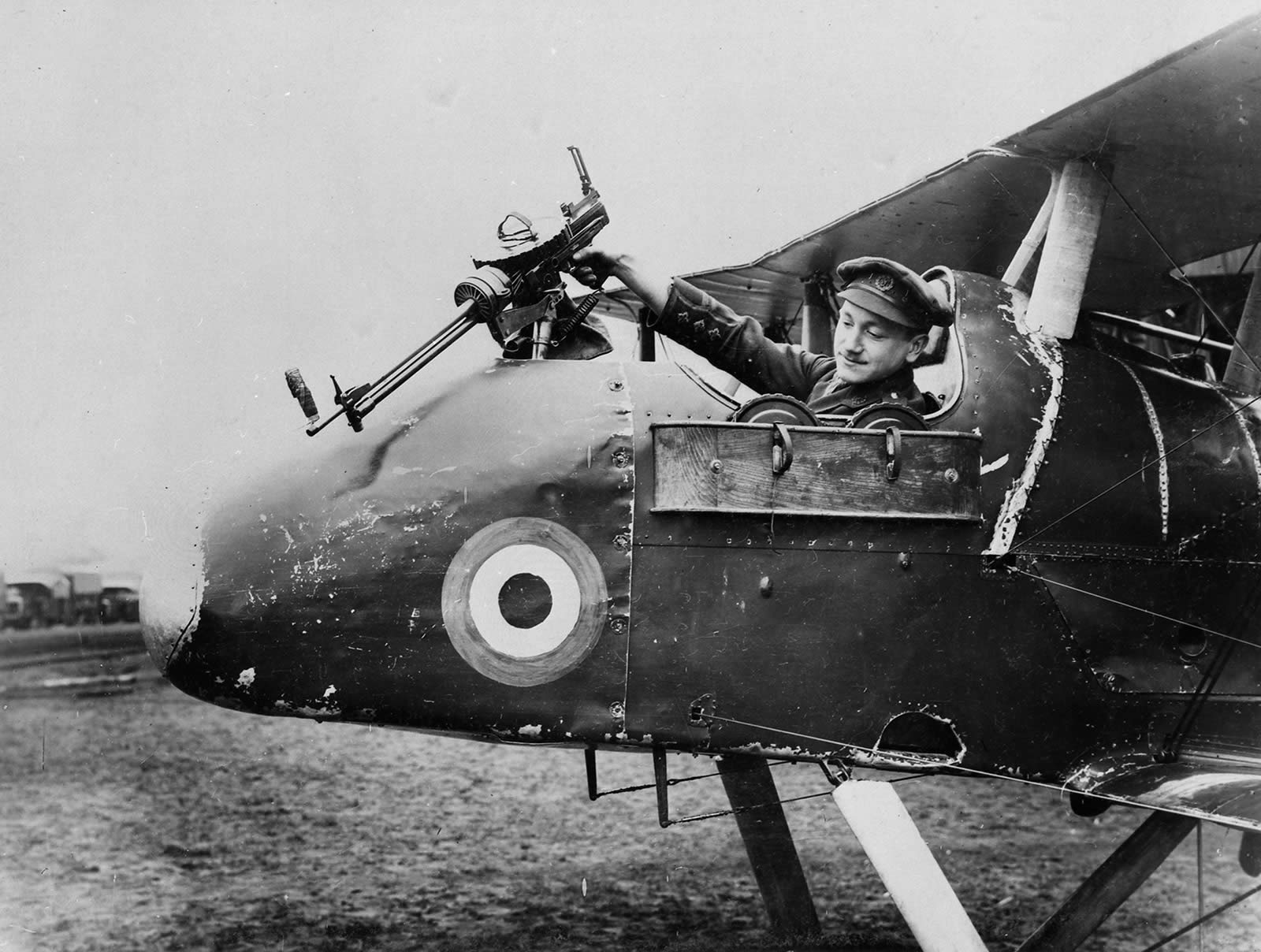Defending the skies
During the First World War, civilians at home were put in the line of fire for the first time as Britain came under attack from airships and aeroplanes.
Military airfields (also known as aerodromes) rapidly become a vital part of the nation’s defences. They were constructed on land previously used by civilians, as well as land already used by the military. Many were established hastily, and some were only temporary. At the start of the war there were only seven service aerodromes; at its end, there were some 301 aerodromes or landing grounds. Although the majority were in the southern counties (a network developed to protect London), there were a significant number in the North, the Midlands and Scotland. Over 250 of these airfields were withdrawn in 1919-20.

FE8 aircraft nose gun , 1916 (catalogue reference: AIR 1/169/15/160/5 24)
Finding sites for airfields was often left to a group of officers, who were told roughly where the airfield was required and tasked with finding the most suitable place for it. The Defence of the Realm Act (DORA) gave the government certain powers to requisition land for the war effort. Arrangements for compensation for landowners were clarified in 1916.
Unexpected problems could emerge in site development. For example, plans for the development of Lympne Aerodrome in Kent ran into difficulties in 1915 when a tenant ploughed the land intended for sheds to house the aeroplanes. In early 1916 the authorities encountered another obstacle at Lympne – part of the field had become an ‘absolute swamp’ and had to be drained.
Early military airfields were often known as ‘emergency landing grounds’ – they were open, level fields, and cows and sheep would graze while aircraft took off and landed.
The first structures to appear were sheds, huts, canvas hangars and tents. Airfield structures that we take for granted today, such as control towers, were nowhere to be seen – it was a long time before the invention of radar. Over time, sturdier buildings were added to airfields as the demands of aircraft maintenance expanded. Aircraft were becoming considerably faster, more manoeuvrable, and capable of destroying other flying machines.
The first aerial threat had been from German airships (Zeppelins) – there were waves of attacks on British towns and cities in 1915 and 1916. Home Defence Squadrons were established to shoot down raiders, such as 37 Squadron which operated in Essex, from Stow Maries aerodrome near Maldon, Coldhanger and the old naval air station at Rochford. It was a vital part of an eastern line of defence against raiding airships for London.
A new phase of the air war began around the spring of 1917, as Germany increasingly deployed long-range bombers such as the Gotha aeroplane. Long range bombers could spend more than two hours in the air, increasing their threat. One of the busiest days in the history of Royal Flying Corps Home Defence Squadrons was 7 July 1917, when aircraft were ordered to take to the skies after 22 Gotha bombers that were heading to London. About 100 aircraft (which came from naval stations, Home Defence Squadrons, training units and other places) rose to attack the enemy – but this emergency force lacked cohesion. Although individual pilots made gallant attacks the solid ranks of enemy aircraft remained unbroken.
London significantly improved its air defence system in response to such attacks, with the introduction of zones for anti-aircraft guns and patrol lines for the fighters, and wireless communication. It was a multi-layered form of defence, and airfields played a significant part in this. The German aerial threat to London, the Midlands and North of England persisted into 1918. The last bombing attack over London was in May of that year.

